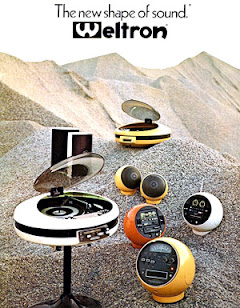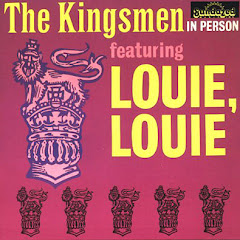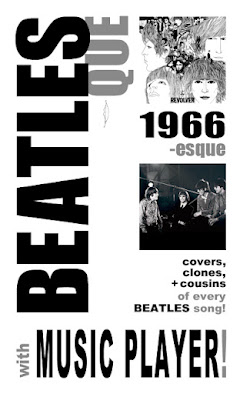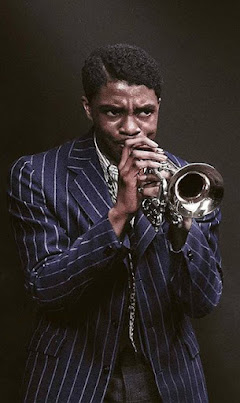remained strong through each decade!
(#1 of 6 parts)
world-spanning
Music Player!
brings you the actual, all-inclusive
history of Rock'n'Soul music,
with essay overviews and Music Players.
▶ History Checklist
Today, the story of how Rock'n'Roll first conquers the world, mutates into new forms, and comes back refreshed!!
Hear an exhaustive music player, with worldwide artists maintaining the '50s styles from 1960 through 1969!
by Tym Stevens
Hear the unlimited Playlist here.)
Learn the whole history, with Music Players!
▶ Revolution 1950s: The Big Damn Bang of Rock'n'Roll!
▶ 1950s PUNK: Sex, Thugs, and Rock'n'Roll!
▶ 1950s Rock, B: The '70s Disciples
▶ 1950s Rock, C: The '80s disciples
▶ 1950s Rock, D: The '90s disciples
▶ 1950s Rock, E: The 2000s disciples
▶ 1950s Rock, E: The 2010s disciples
C h a p t e r
l i n k s :
𝟭 • '50s Rock continued into the '60s.
𝟮 • Rock became permanent: borderless, fluid, and adaptive.
𝟯 • Styles evolved.
𝟰 • All movements were underscored by the original Rock'n'Roll.
𝟱 • And so it came back again.
The March on Washington, 1963
'50s Rock continued into the '60s.
Rock'n'Roll is a shared dream based on rebel instincts: to dance, to make love, to join together, to expand out, to be liberated.
The Beats were rewriting the Word, Civil Rights was rescuing the future, Rock rolled over Beethoven. The new decade was a renewed world, mod ideas, a cosmopolitain outlook, inclusive, progressive>. The youth saw themselves in JFK, the Peace Corp, Dr. King, jukeboxes and paperbacks, and a new possible world where there were no borders to constrain anyone. The tidal wave of the rebel Fifties> surged into the early 60's and became the undercurrent of all its subsequent waves.
The Beatles were the cumulation of all the styles before them combined and renewed. Everything was starting over, enhanced. If Rock'n'Roll was a Big Bang> of culture, then Beatlemania> is the second Big Bang of Rock. But the rote narrative that consigns everyone previous as a precursor is myopic. It's a revisionism without vision.
It's all of a piece and everyone is still there. Many of the '50s artists were not much older than the British Invasion>, and ofttimes were their peers, like Brenda Lee, the Collins Kids, Ricky Nelson, and Frankie Lymon. Elvis was still a presence through his movies, Buddy Holly> still rode the charts from the vaults while The Crickets ticked on, The Everly Brothers were evergreen, and Roy Orbison, Sam Cooke, and Del Shannon had their biggest hits in the early '60s.
"Oldies" schmoldies. Record bins and radio hacks segregate Rock (counterculture '60s artists who kept having hits, plus) from Oldies, the elders and also-rans. Another false border to be ignored. A generation gap? No, more fairly, society and culture were like an extended family with growing pains.
To on-air DJ's, songs were disposable; Hits today, "Oldies" tomorrow played as filler and requests. There were no compilations yet, no record chains with catalog albums, no archivists or critics, no belief in Rock as more than a fad. To jaundiced eyes in 1964, The Beatles were just a new fad to replace Elvis.
But to sharper ears, they were proof that Rock was truly worldwide and now permanent. And that repression was losing.
photo essay by Richard Hattersley
Rock became permanent:
borderless, fluid, and adaptive.
Meanwhile acolytes in every nation sawed through covers into clones into originals to find themselves. This is how the creative cycle always works: walking in previous shoes to find your own tread. Parents, child. Two cool things make a new cool thing. Tradition can become a calcified ritual that excludes, but true creativity thrives in fluid combinations that birth new options.
Rock may have seemed to explode spontaneously from the United States, but it was inherently a world artform. The USA isn't really a singular nation, it is the notion of all nations in one place. At its best it is a dialogue of all voices. American Rock'n'Roll was thus made of many sounds that had come from many places: its source musics can be traced back to Ireland, England, Africa, Arabia, Mexico, the Caribbean, etc.
"Ek Phool Char Kante" (Bollywood 1960); Los Llopis
"People have divergent life histories, different shared experiences with distinctive ways of relating to these differences. We all have a worldview, and we all share our worldview with others with similar experiences. We have culture."
-Robert Wald Sussman,
author "The Myth of Race"> (2014)
It's sometimes said we get our sense of the beat from remembering our mother's heart in the womb. It is the primal link on the subliminal level for all of us. Creativity itself is about communal resonance and response. Pssst! The big secret is... there are no borders between people, there is only common experience and recognition. And true hearts will always hear connection and respond unhindered by any false divisions.
You see, the robo-narrative about Rock'n'Roll is wrong.
It's wrong in its limited scope and false conflicts. Rock'n'Roll isn't just Country and Blues, it sources myriad other musics, as well. Rock'n'Roll isn't two alien races of 'white' versus 'black', but instead is just unique persons feeling the same feeling and sharing it.
(The short: humans are one race > >, there are no races >, it all comes down to your character and actions, adult up and sort it, let's go forward together, next.)
Now that that's solved, here's the core truth: you're an individual, and you respond strongly to something because you are that thing. That sound, that concept, that lover, that outlook, that feeling that moves you... it's not something you just imitate, it's recognition of something you already are, and it's giving you the permission to come forward and join in. While dummies cause real harm over false differences, sharp souls are working together to make a better day.
You start by singing each other's songs.
The original Rock'n'Roll is a spiritual alphabet, a sonic Rosetta Stone regardless of the tongue.
So no more borders, no exclusion, no segregation, no gender, no skin, no more constraints. Which is why pompadours and suede shoes quickly swiveled in Sweden (Sven-Ingvars, The Noise Men), Spain (Kurt Savoy, Los Pekenikes), France (Amy Anahid, Les Chats Sauvages, Nicole Paquin), Germany (Rene Kollo), Poland (Niebiesko-Czarni), Canada (Les Nautique, Les Shadols, Les Ingenues), New Zealand (Ivor Fisher), and Japan (Hibari Misora, Kikayo Moriyama, Yasushi Suzuki).
Mexico was one of the quickest to lock onto Rock and roll it over with Los LLopis, Freddy Fender, Los Locos del Ritmo, Rosie and The Originals, and Los Apson. In the Netherlands, Indonesian immigrants embraced Rock and first popularized it with Indorock bands like The Tielman Brothers, The Rockin' Blacks, and The Blue Diamonds. On Bollywood's screens, actor Sunil Dutt pantomimed mock Rock sung by Mohammed Rafi or Iqbal Singh. In Jamaica, Laurel Aitken's attempts at island R'n'B rapidly morphed into the first Ska records.
And in England, John Barry, Johnny Kidd and The Pirates, and Helen Shapiro set the stage for some guys from Liverpool once called 'The Beat Brothers' who were about to beat all.> (Ba-dump-bump.)
and the Liverpool doo wop group, The Chants
Styles evolved.
Rock'n'Roll was already a broad palette to start with. But new artists mixed primary colors into secondaries, countered with complements, negated with neutrals, collaged it, painted over it, repurposed it.
The Gospel harmonies romping in Doo Wop rebomped in Girl Groups> and Motown troupes, in The Beach Boys and The Mamas And The Papas, in The Chants (Liverpool) and Sly And The Family Stone>.
Cajun and New Orleans songs led to the funkiness> of The Meters and Dr. John, and the swampiness of Bobbie Gentry and Tony Joe White.
The string arrangements of Buddy Holly, The Platters, and torch standards led to the lush productions of Phil Spector, Charles Stepney, and David Axelrod, and to mature albums like "Pet Sounds", "Sgt. Pepper">, "Days of Future Past", and "Forever Changes".
Bebop and Folk and world musics led to Psychedelia>.
You can make a game (or playlists) out of all the Soul> vocalists influenced directly by Little Richard, Mahalia Jackson, Hank Williams, Jackie Wilson, Ray Charles, or Sam Cooke.
And of course, as Dr. King knew, Thesis and Antithesis still always lead to Synthesis anyway. Dylan and others had first countered Rock with Folk for its austere rawness and adult depth. But anyone listening to multiple things will combine them, and so came The Byrds, The Chambers Brothers, Creedence Clearwater Revival, The Band, and Fairport Convention.
So the Fifties wave naturally churned up new currents, but with all this turnover, the source undercurrent still remained. As the attached music player proves, the original styles -Rockabilly, Rhythm'n'Blues, Blues, Honky Tonk, Doo Wop, Cajun, Mambo, etc.- still echoed directly in set lists, albums, and transistors worldwide. Initially, as the hit style (early-'60s), then as standards (mid-'60s), then as spoof (latter-'60s), and ultimately as a restart revival (1969).
by Greg Irons (1969)
All movements were underscored
by the original Rock'n'Roll.
An idea, a movement, a philosophy, a genre are perennials: they seed into a tree with branches. The leaves may shed but the tree always remains, growing. Rock is Yggdrasil.
As soon as Rock'n'Roll found its way, it was a Genre, a perennial like Classical and Jazz that would outlast fleeting seasons or flighty masses or lazy journos. It is an idea that will always trigger new ideas, eternal. Beyond borders, eras, trends, or ignorance.
This is why dismissive (and insecure) buzzwords like retro, outmoded, period, quaint, fossil, or Oldies are so essentially clueless and laughable. Quality is timeless and ever-present, regardless of whether shallow trendchasers, flits, and snarks miss this distinction.
The original 1950's Rock'n'Roll could never really go away. It was everywhere in the '60s from the start, reflected in every local cover set ("Louie Louie">), Surf solo (Chuck Berry>), Brit harmony (Everly Brothers), danceclub beat (Bo Diddley>), Garage shout (Little Richard>), Boogie pound (Jerry Lee Lewis), Soul vamp (Ray Charles), Blues moan (Howlin' Wolf), or mic swagger (Elvis Presley). The first youth of Rock were weaned on it, first walked with it, made out to it, got in trouble over it, crowded together with it, expanded it.
Rock'n'Roll divined musicians to dig its roots. While Howlin' Wolf, Jimmy Reed>, and Barbara Lynn carried the Blues torch, new upstarts like Paul Butterfield, Mike Bloomfield, Taj Majal, and Bonnie Raitt picked it up. In England, purists like Alexis Corner, John Mayall, and Judy Roderick presaged The Rolling Stones, The Yardbirds, The Animals, and The Bluesbreakers. Dylan responded to this cross-Atlantic ricochet by "Bringing It All Back Home" when he went electric.
Rock'n'Roll stretched music into new branches. The guitar instrumentals of Link Wray and Duane Eddy led to virtuosos like The Shadows, Lonnie Mack, Takeshi Terauchi, and Travis Wammick. The Ventures led to Dick Dale led to Surf and Drag songs. In Seattle, The Kingsmen and The Wailers' frat-party rock -like Little Richard belting with Chuck Berry blazing- led to The Sonics and Garage Rock. [More directly, listen to the ferocious Bunker Hill's "The Girl Can't Dance" (1962), backed by Link Wray.] Ray Charles led to Stax, "Money" led to Motown, Hank Williams led to Gram Parsons and Emmylou Harris, Howlin' Wolf blues led to Captain Beefheart artnoize.
Like Altman, the dialogue began to overlap. By the latter '60s, Dean Carter had one shoe in Rockabilly and the other in Garage Rock. The Beatles' "Lady Madonna" homaged Fats Domino so well that he sang it back. Del Shannon went psychedelic. Dion and Bobby Darin went singer/songwriter. Chess Records paired Muddy Waters and Howlin' Wolf with acidheads and blues-rockers, to their initial chagrin but fatter wallets. Charlie Rich sang Soul. Miles Davis brewed Fusion. Elvis came back and got social. "HAIR" did everything all at once, on Broadway, no less.
But no matter how far you get from home you always remember the hearth. The stellar Psychedelia by Jimi Hendrix, Cream, and Steve Miller was underscored by the Blues of all before them. The Blues Rock of The Who, Janis Joplin, Steppenwolf, and Mother Earth reflected kindreds Etta James, Koko Taylor, and Albert King, who they were on touring circuits with. The common experience of Rock between artists and between audiences was all-inclusive, a journey of mentors and heirs exploring tributaries off the same path.
A shared dream based on rebel instincts.
And so it came back again.
Bill Graham insisted on seasoned pros headlining with new acts in his Fillmore concerts. This familial outlook helped inspire Rock Revival festivals that brought Chuck Berry, Bo Diddley, Little Richard, and Big Mama Thornton to counterculture crowds. By 1969, original-style Rock'n'Roll went from winking nostalgia ("Back In the U.S.S.R.", "Oh Darling", "Come Together") or muggy pastiche (Ruben and The Jets, Sha Na Na) to full-throttle revival (MC5, Flamin' Groovies).
Its 'return' would lead to Glam Rock, Pub Rock, Punk, movies, TV shows, Broadway, and more in the 1970s...
Next:
▶ 1950s Rock, B: The '70s Disciples
© Tym Stevens
See Also:
• Revolution 1950s: The Big Damn Bang of Rock'n'Roll!
• 1950s PUNK: Sex, Thugs, and Rock'n'Roll!
• CHUCK BERRY: The Guitar God and His Disciples
• BO DIDDLEY: The Rhythm King and His Disciples
• BUDDY HOLLY: Rock's Everyman and His Disciples
• LITTLE RICHARD: The Voice of Rock and His Disciples
• JIMMY REED: The Groover of Rock, From Motown To Sesame Street
• 1950s Rock, B: The '70s Disciples
• 1950s Rock, C: The '80s Disciples
• 1950s Rock, D: The '90s Disciples
• 1950s Rock, E: The 2000s disciples
• 1950s Rock, E: The 2010s disciples
• The Real History of Rock and Soul!: A Manifesto, A Handy Checklist














































































































































